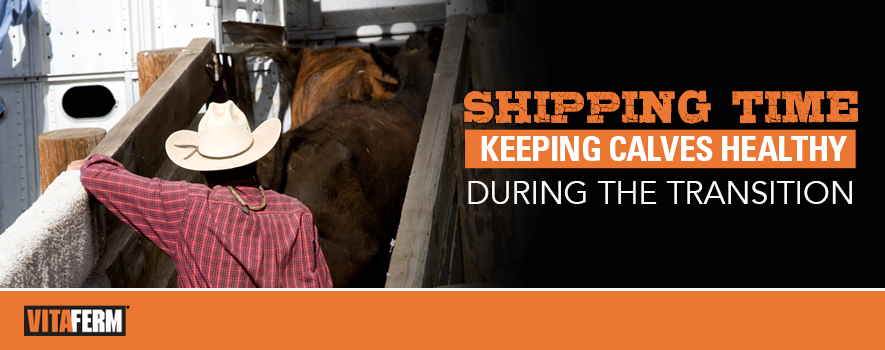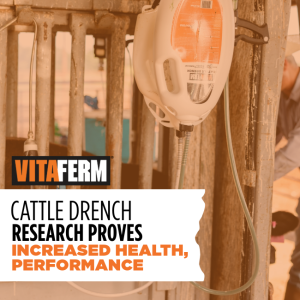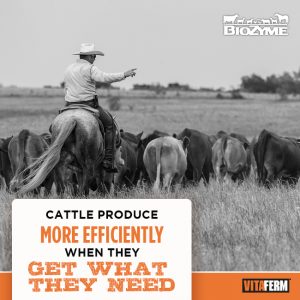
Shipping cattle causes shrink, appetite loss and often sickness. Taking precautionary steps both prior to shipping and on arrival, can help keep shrink at a minimum while keeping calves healthier and gaining.
Generally, cattle will shrink 1% of their body weight per hour for the first few hours they are off feed and water, and continue to shrink at a lower percentage of their weight as time continues. The first hours primarily consist of excretory shrink, followed by tissue shrink, a loss of moisture in the muscle.
In addition to shrink, the stress will typically cause calves to lose their appetite, which hinders their overall health and performance upon arrival to their new destination.
Taking steps prior to shipping can help reduce stress on your calves even before they step foot on the truck. If you are shipping them from a pasture, be sure to gather and pen them as close to the ship pen and loading chute as you can the night prior. This reduces the amount of extra movement and stress the day of shipping.
Also, know about how many calves your loading pen can hold at one time and don’t overcrowd it, making animals bunch up, step on one another and cause injury before they even load in the semi. Be sure your facilities are designed for low-stress cattle handling and created in a way that the cattle will flow easily onto the semi without being pushed and prodded. Finally, be organized. Make sure everyone involved in shipping day from the trucker, vet, brand inspector and your helpers, are aware of the load-out time so calves aren’t losing weight just standing around.
Once the calves are off the semi, their stress doesn’t end. They find themselves in a new environment where they are hunting for a new water source and familiarizing themselves with new forages. If they are entering a feedlot, they might be experiencing dry lots, dirt, mud or manure as well as long concrete bunks for the first time.
You can minimize he calves’ stress by making sure they have the proper nutrition program in place, including a supplement that will provide them with the vitamins, minerals and nutrients they need to stay healthy. One way to help keep calves healthy, eating and gaining once they are received is by including Amaferm® into the supplement program.
Amaferm®️ is a prebiotic designed to enhance digestibility by amplifying the nutrient supply for maximum performance. It is research-proven to increase intake, digestion and absorption. Research shows that using the Vita Charge® Drench with Amaferm helps animals recover more quickly from stressful environmental and management protocols at receiving. In a research trial, calves fed Amaferm via the Vita Charge Drench had greater weight gains, 0.10 lbs/head/day, during the first 22 days of the trial. The group that was administered Vita Charge Drench also showed less morbidity.
In addition to using the Vita Charge Drench upon arrival, producers can continue to see the Amaferm advantage through the VitaFerm Gain Smart® Stocker Program. The Vita Charge Drench on day one of arrival is the first step. Next, the Vita Charge Stress Tubs should be offered for the first two weeks to promote feed and water intake while increasing digestibility to maximize the energy value of feed for more gains. The third step is to choose a Gain Smart mineral that compliments the calves’ diet: Gain Smart Stocker, Gain Smart Stocker HEAT, Gain Smart Wheat or Gain Smart Balancer RU1600. All VitaFerm Gain Smart products promote calf health and vigor, stimulate digestion and increase nutrient uptake for optimum gain, support hoof health and immunity and supplement those minerals lacking in the pasture and rectify mineral imbalances.
Transporting calves isn’t cheap or easy, but with proper planning prior to shipping and a good nutrition program once they reach their destination, your calves will thrive with reduced stress and increased performance.


